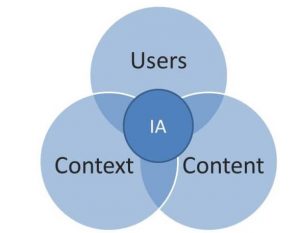What Is The Difference Between Information Architecture And Information Infrastructurein Computer Science?

I am currently studying computer science and engineering. I want to know what exactly is the actual difference between information architecture and information infrastructure in computer science? Thanks in advance.













